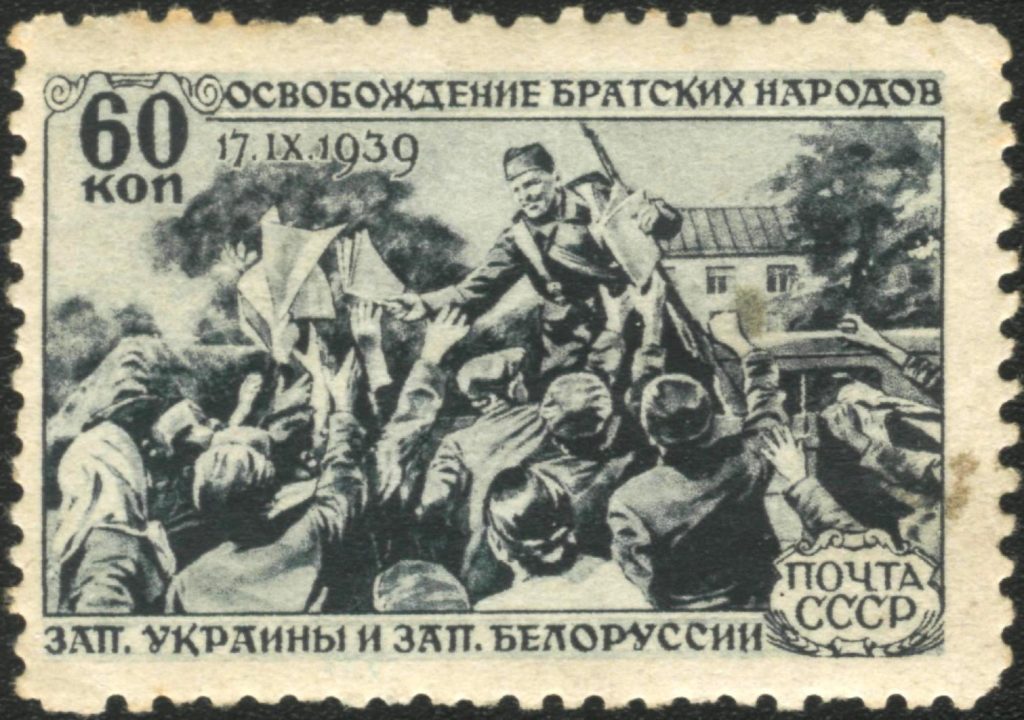In September 2021, the Russian Foreign Ministry published a tweet in which it called the events of September 1939 “the liberation campaign of the Red Army on Polish territory.” We checked how reasonable this is.
September 17, 2021 Russian Ministry of Foreign Affairs on Twitter congratulated subscribers with a significant date. According to the Ministry of Foreign Affairs, “On September 17, 1939, the Red Army began a liberation campaign in Poland. Soviet troops reached the Curzon Line, preventing the Wehrmacht from approaching Minsk. The peoples of Western Belarus and Western Ukraine greeted the Soviet soldiers with jubilation.” Similar publications appeared on the Foreign Ministry’s accounts on other social networks, for example Facebook And Instagram. All these messages caused mixed reactions from Internet users.
? On September 17, 1939, the Red Army began a liberation campaign in Poland. Soviet troops reached the Curzon Line, preventing the Wehrmacht from approaching Minsk.
— Russian Foreign Ministry?? (@MID_RF) September 17, 2021
The peoples of Western Belarus and Western Ukraine greeted the Soviet soldiers with jubilation.
More details? pic.twitter.com/yk0by4aC1A
What really happened in September 1939? Soviet-Polish border, installed The Treaty of Riga, signed in March 1921, took place 30 km west of the modern city limits of Minsk. However, the appearance of a German army near the city was extremely unlikely. According to the second point secret protocol to the non-aggression treaty between the USSR and Germany of August 23, 1939, after the “reconstruction” of Poland, the border between the two countries was to pass along the Vistula, Narev, Pissa and San rivers, that is, to the west Curzon lines — a conditional border dividing regions with predominantly Ukrainian, Belarusian and Polish populations. It was named after British Foreign Secretary George Curzon, who demanded to stop the advance of the Red Army during the Soviet-Polish War of 1920.
However, on September 5, 1939, the People's Commissar for Foreign Affairs of the USSR Vyacheslav Molotov in a memorandum to the German ambassador to the Soviet Union Werner von Schulenburg indicated, that crossing the line of contact of interests is possible, but “such cases cannot interfere with the precise implementation of the adopted plan.”
On the same day, the USSR refused Poland the transit of military materials through its territory, motivating it is a reluctance to be drawn into war. At the same time, the USSR allowed German ships to enter Murmansk in order to avoid capture by French and British warships, as well as allowed use the Minsk radio station as a radio beacon for orienting German military aircraft.
The delay in the start of hostilities against Poland was caused not by the peacefulness of the Soviet leadership, as stated in the video, but by the desire of the Central Committee of the All-Union Communist Party of Bolsheviks and the General Staff to complete the mobilization of personnel, as well as horses, cars and tractors from the national economy, necessary to ensure the mobility of units and formations of the Ukrainian and Belarusian fronts. In addition, Moscow sought to clarify the situation in the theater of operations and the likelihood of the start of large-scale military operations by France and Great Britain in response to German aggression. September 9 General Staff of the Red Army gave directive to begin hostilities in two days. It ordered the troops of the Belorussian Front to capture Oshmyany by September 14 and reach the approaches to Vilna (Vilnius), and the Ukrainian Front to advance to Lutsk and Stanislav (now Ivano-Frankivsk).
However, then the start of the operation was postponed, since the reports of the German command about the capture of Warsaw on September 8 were not confirmed: only the advanced tank units of the Wehrmacht reached its outskirts, which met stubborn resistance from the garrison of the Polish capital and the townspeople. The siege of the city lasted until September 28 and ended due to the exhaustion of defense capabilities.
The delay in the start of hostilities is also due to the USSR’s desire to evade accusations of complicity in German aggression. September 10, receiving the German Ambassador Werner von Schulenburg, People's Commissar for Foreign Affairs of the USSR Vyacheslav Molotov reported, that “the Soviet government intended to declare that Poland was falling apart and, as a result, the Soviet Union should come to the aid of the Ukrainians and Belarusians who were threatened by Germany. This pretext will make the Soviet intervention seem plausible in the eyes of the masses and will give the Soviet Union the opportunity not to look like an aggressor.”

The Red Army reached the Curzon Line in most directions, but in the Lvov and Bialystok directions, Soviet troops advanced significantly to the west in September 1939. Helping the Belarusians and Ukrainians was rather a pretext for starting hostilities against Poland. In fact, for the Soviet leadership, the occupation of Western Ukraine and Western Belarus was part of the division of spheres of influence in Eastern Europe according to the Molotov-Ribbentrop Pact, which confirmed the conclusion of an agreement between the USSR and Germany "About Friendship and Borders".
Indicative and speech Vyacheslav Molotov at the session of the Supreme Council on October 31, 1939: “It turned out that a short blow to Poland from first the German army and then the Red Army was enough for nothing to remain of this ugly brainchild of the Versailles Treaty, which lived off the oppression of non-Polish nationalities.” Words from the People's Commissar for Foreign Affairs, believes historian Sergei Sluch, confirmed that the leadership of the USSR recognized the participation of the Red Army in the defeat of Poland.
The term “liberation campaign” appeared in 1939. In the post-war years, it gained a foothold in historical literature, in particular in the six-volume "History of the Great Patriotic War" and 12-volume "Stories of the Second World War", as well as in university and school textbooks on the history of the USSR. This term masks the USSR's complicity in Germany's war against Poland. As for the rejoicing of the masses, the majority of Ukrainians and Belarusians really rejoiced at the arrival of the Red Army, which, it seemed to them, would put an end to discrimination based on nationality. However, delight quickly weakened with the first attempts at collectivization and deportations. It is also difficult to imagine that the Poles, who made up the majority of the population of the former Lvov and Bialystok voivodeships that came under the control of the USSR, rejoiced at the arrival of the Red Army.
Cover photo: Soviet troops enter Vilna (1939)
Mostly not true
- Ministry of Foreign Affairs of the Russian Federation. Foreign policy documents. Volume 22
- M. Meltyukhov. Soviet-Polish wars. Military-political confrontation 1918–1939
- N. Lebedeva. September 1939: Poland between Germany and USSR
- S. Case. USSR, Eastern Europe and World War II (1939–1941)
If you find a spelling or grammatical error, please let us know by highlighting the error text and clicking Ctrl+Enter.







